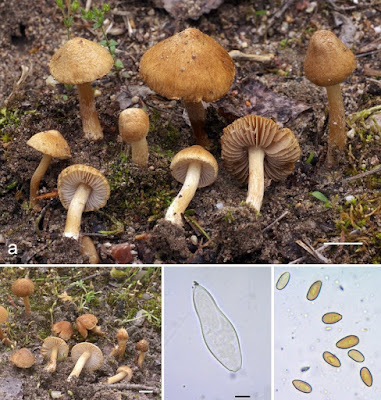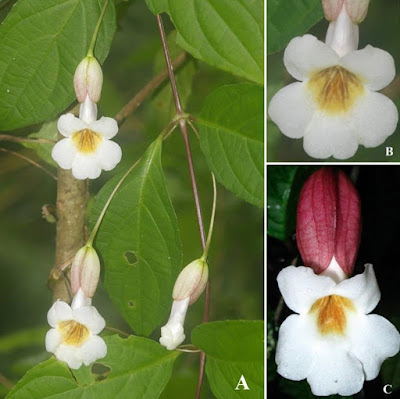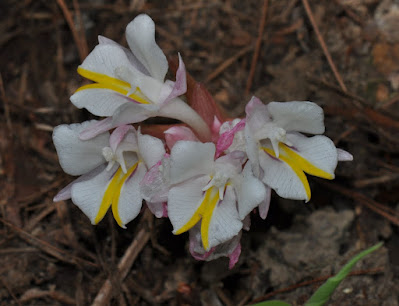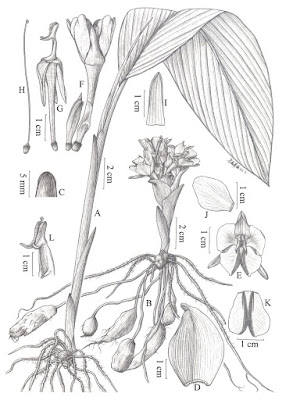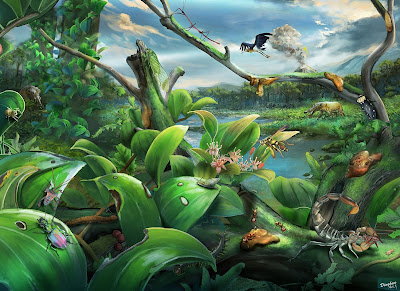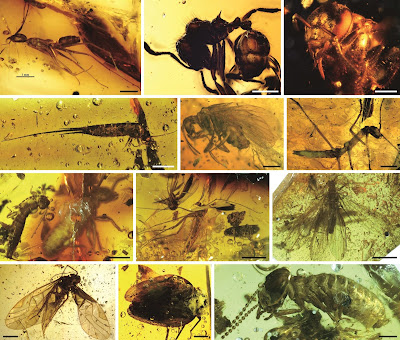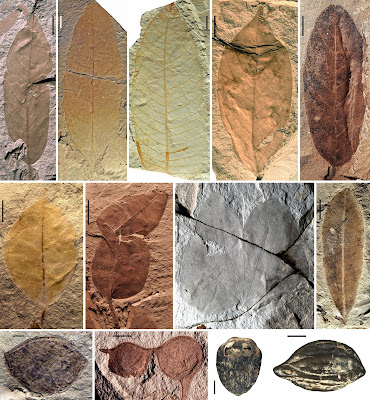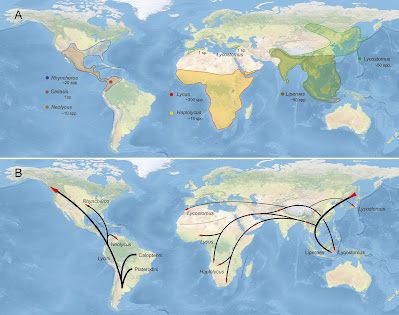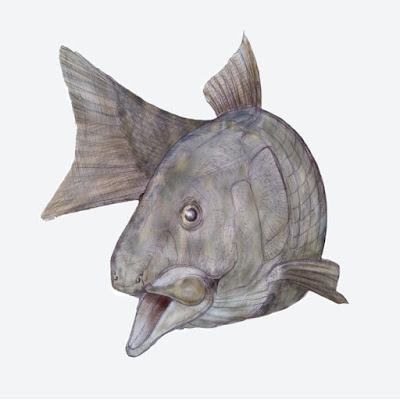[Most Recent Entries] [Calendar View]
Sunday, May 2nd, 2021
| Time | Event | ||||
| 7:52a | [Fungi • 2020] Inocybe woglindeana (Agaricales: Inocybaceae) • A New Species of the Genus Inocybe, thriving in Exposed Habitats with Calcareous Sandy Soil
Abstract We describe a smooth-spored species of Inocybe, the basidiomes of which have been encountered growing with Salix in exposed habitats, often with calcareous sandy soils in Germany and Fennoscandia. The species is presented with a detailed description, photographs and microdrawings. Its relationship to similar taxa growing in the same environments is illustrated with ITS and LSU data. Morphologically the species would be keyed out as a member of I. sect. Tardae. For comparison, the types of somewhat similar species occurring in similar habitats as I. woglindeana, i.e. I. subpelargonium, I. rufuloides, I. inodora, I. neorufula and I. variispora, were examined morphologically; from the latter ITS and mtSSU V6 data were obtained. Molecular data supported a very close relationship between I. woglindeana and I. variispora. The two species are also morphologically similar, but differ in colour of pileus, in shape and details of hymenial cystidia, and also in their host and habitat. None of the other species, represented by our own collections or sequences from the public domain, are phylogenetically closely related to I. woglindeana. Key words: Agaricales, Inocybaceae, Inocybe, Taxonomy, Type studies, Europe, Molecular systematics, ITS, LSU Inocybe woglindeana Bandini, Vauras & Weholt sp. nov. DIAGNOSIS: Most basidiomes fairly small with ochraceous to ochraceous brownish felty-lanose pileus, when young usually with ample whitish velipellis and cortina, a stipe that is sparsely pruinose only at the extreme apex, spores that on average are longer than 10 µm, hymenial cystidia that are mostly ventricose with rather thin walls and often with a truncate or roundish base. It grows on exposed locations, mostly with Salix and also Populus nearby. The most similar species morphologically as well as molecularly is I. variispora. From this and other species it differs by the above-named combined characteristics and by ITS sequence data. ETYMOLOGY: “woglindeana”, after Woglinde the Rhinemaiden in the “Ring der Nibelungen” of Richard Wagner, because the holotype of the species was collected on the border of a lake next to the river Rhine. Ditte Bandini, Jukka Vauras, Øyvind Weholt, Bernd Oertel and Ursula Eberhardt. 2020. Inocybe woglindeana, A New Species of the Genus Inocybe, thriving in Exposed Habitats with Calcareous Sandy Soil. Karstenia. 58 (1); 41-59. DOI: 10.29203/ka.2020.488 | ||||
| 9:29a | [Botany • 2017] Thunbergia lutea (Acanthaceae) สร้อยพิสุทธิ์ • A New Record for Thailand
Abstract Thunbergia lutea T.Anderson, a new record for Thailand is reported. A description, illustrations, and distributional data are provided. Keywords: Flora of Thailand, IUCN Conservation status, new record, tropical plant Distribution.— China, India, Nepal, Bhutan, Myanmar, Thailand. Thailand.— NORTHERN: Chiang Mai [Doi Phahompok] Vernacular name.— Soi phisut (สร้อยพิสุทธิ์). Chalermpol Suwanphakdee and Piyakaset Suksathan. 2017. Thunbergia lutea T.Anderson (Acanthaceae), A New Record for Thailand. Thai Forest Bulletin (Botany). 45(2); 113-117. DOI: 10.20531/tfb.2017.45.2.06 | ||||
| 9:39a | [Botany • 2019] Curcuma tongii (Zingiberaceae, subg. Ecomatae) • A New Species from southern Yunnan, China Abstract Curcuma tongii, a new species of Curcuma subg. Ecomatae (Zingiberaceae) from southern Yunnan, China, is described and illustrated here. The similarities and differences from its closest allied species in the subg. Ecomatae, C. singularis and C. flaviflora, C. newmanii, are discussed. The conservation assessment and distribution map are also provided. Keywords: Curcuma singularis, Curcuma flaviflora, Zingibereae, Zingiberoideae, new taxon, conservation, distribution, Monocots Li-Xia Zhang, Hong-Bo Ding, Hai-Tao Li, Zhong-Lian Zhang and Yun-Hong Tan. 2019. Curcuma tongii, A New Species of Curcuma Subgen. Ecomatae (Zingiberaceae) from southern Yunnan, China. Phytotaxa. 395(3); 241-247. DOI: 10.11646/phytotaxa.395.3.9 | ||||
| 10:25a | [Paleontology • 2021] The mid-Miocene Zhangpu Biota reveals an outstandingly Rich Rainforest Biome in East Asia
Abstract During the Mid-Miocene Climatic Optimum [MMCO, ~14 to 17 million years (Ma) ago], global temperatures were similar to predicted temperatures for the coming century. Limited megathermal paleoclimatic and fossil data are known from this period, despite its potential as an analog for future climate conditions. Here, we report a rich middle Miocene rainforest biome, the Zhangpu biota (~14.7 Ma ago), based on material preserved in amber and associated sedimentary rocks from southeastern China. The record shows that the mid-Miocene rainforest reached at least 24.2°N and was more widespread than previously estimated. Our results not only highlight the role of tropical rainforests acting as evolutionary museums for biodiversity at the generic level but also suggest that the MMCO probably strongly shaped the East Asian biota via the northern expansion of the megathermal rainforest biome. The Zhangpu biota provides an ideal snapshot for biodiversity redistribution during global warming. Bo Wang, Gongle Shi, Chunpeng Xu, Robert A. Spicer, Vincent Perrichot, Alexander R. Schmidt, Kathrin Feldberg, Jochen Heinrichs, Cédric Chény, Hong Pang, Xingyue Liu, Taiping Gao, Zixi Wang, Adam Ślipiński, Mónica M. Solórzano-Kraemer, Sam W. Heads, M. Jared Thomas, Eva-Maria Sadowski, Jacek Szwedo, Dany Azar, André Nel, Ye Liu, Jun Chen, Qi Zhang, Qingqing Zhang, Cihang Luo, Tingting Yu, Daran Zheng, Haichun Zhang and Michael S. Engel. 2021. The mid-Miocene Zhangpu Biota reveals an outstandingly Rich Rainforest Biome in East Asia. Science Advances. 7, 18, eabg0625. DOI: 10.1126/sciadv.abg0625 | ||||
| 9:03p | [Entomology • 2021] Sexually Dimorphic Characters and Shared Aposematic Patterns mislead the Morphology-based Classification of the Lycini (Coleoptera: Lycidae)
Abstract The Lycini (Elateroidea: Lycidae) contains > 400 species placed in four typologically based genera and numerous subgenera. We assembled a mito-ribosomal dataset representing ~100 species from the whole range and recovered a phylogeny rejecting Lycus and Lycostomus as polyphyletic assemblages. The male-specific wide elytra and elytral thorns are identified in unrelated Neolycus and Lycus. The morphological similarity based on sexual dimorphism and aposematic patterns defined terminal clades and misled the genus-rank classification. We delimit Neolycus, Rhyncheros reinst. name (= Thoracocalon syn. nov. = Lyconotus syn. nov.), Lipernes Lycostomus, Haplolycus and Lycus. Demosis and six subgenera of Lycus are synonymized with Lycus. Celiasis Laporte, 1840 is kept in the classification as a nomen dubium until any specimen is available. The deep lineages are known from the Americas and Asia. Africa was colonized by Lycus and Haplolycus. Each specific aposematic pattern occurs in a limited range, and the similar body shape and coloration evolved in unrelated sympatrically occurring lineages. High intraspecific polymorphism is putatively a result of the adaptation of various populations to local mimetic assemblages. Therefore, the delimitation of many phenotypically diverse species should be investigated. Keywords: ancestral areas, divergence dating, net-winged beetles, taxonomy, zoogeography Dominik Kusy, Michal Motyka, Lukas Fusek, Yun Li, Matej Bocek, Renata Bilkova, Michaela Ruskova and Ladislav Bocak. 2021. Sexually Dimorphic Characters and Shared Aposematic Patterns mislead the Morphology-based Classification of the Lycini (Coleoptera: Lycidae). Zoological Journal of the Linnean Society. 191(3); 902–927. DOI: 10.1093/zoolinnean/zlaa055 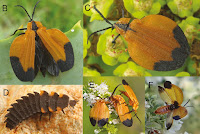 | ||||
| 9:12p | [PaleoIchthyology • 2019] Lanxangichthys alticephalus • A New Lepisosteiformes (Actinopterygii: Ginglymodi) from the Early Cretaceous of Laos and Thailand, Southeast Asia
Abstract A new genus and new species of ginglymodian is described from the Aptian Grès supérieurs Formation of the Savannakhet Basin, Laos (Lao People's Democratic Republic), found at the Ban Lamthouay locality. The fish is known from a single isolated head, which shows enough diagnostic characters to characterize a new taxon. It represents the first named actinopterygian fish from the Mesozoic of Laos. Among the derived characters are a very short and deep head, a series of very deep anterior infraorbitals, and a mosaic arrangement of the suborbitals. Recognition of this new form led us to identify isolated bones previously found in the Thai Khok Kruat Formation in Thailand, a lateral equivalent of the Grès supérieurs Formation. Two localities, Ban Saphan Hin and Khok Pha Suam, have yielded remains, in particular bones of the skull roof and of the circumorbital series as well as a partial postcranial body, assignable, with caution, to the new genus. When included in a cladistic analysis, the new taxon is placed at the base of the lepisosteoid lineage, together with Isanichthys known from an older formation in Thailand. The phylogenetic pattern obtained differs in some details from previous analyses and points out the pivotal role that some taxa play in the reconstruction of the phylogenies of ginglymodians. This new taxon enriches the diverse Late Jurassic–Early Cretaceous ginglymodian assemblage in South-east Asia, which surprisingly shows no evidence of teleosts. Keywords: systematics, Holostei, Mesozoic, stratigraphy, freshwater environment Holostei Müller, 1844 (sensu Grande 2010) Ginglymodi Cope, 1872 (sensu Grande 2010) Lepisosteiformes Hay, 1929 (sensu López-Arbarello 2012) Genus Lanxangichthys gen. nov. Type species. Lanxangichthys alticephalus gen. et sp. nov. Diagnosis. As for the type and only species. Derivation of name. From the Kingdom of Lan Xang, Kingdom of the ‘million elephants’ (1354–1070 BC), which covered the main part of the Lao People’s Democratic Republic and of the Isan region in Thailand, the area where the genus is found; and ichthys, meaning fish in Greek. Lanxangichthys alticephalus sp. nov. Derivation of name. From the Latin altus, meaning high or deep, and cephalicus, meaning head, in reference to the deep head of the new species. Locus typicus. Ban Lamthouay, Tang Vay District, Savannakhet Province, Laos.
cf. Lanxangichthys (Figs 4A–H, 5, 6) Locality. Ban Sapan Hin, Nakhon Ratchasima Province, Thailand. Lanxangichthys sp. (Figs 4I, J, 6) Locality. Khok Pha Suam, Ubon Ratchathani Province, Thailand. Conclusions: Lanxangichthys alticephalus represents a new and strange ginglymodian and confirms the high diversity of this group during the Late Jurassic and Early Cretaceous in South-east Asia. Although not related to each other, this species belongs to the ginglymodians with deep and short heads, which is a morphotype already present in the Triassic with the Chinese genera Luoxiongichthys and Kyphosichthys, for instance (Wen et al. 2012; Sun & Ni 2017). This morphotype corresponds to an effective and repeated mode of life, located at the opposite position to gars in body morphospace. The new taxon also provides interesting new data about the faunal connection that links the Gres sup erieurs and the Khok Kruat formations. Its inclusion in a phylogenetic analysis blurs slightly the signal obtained in previous analyses, but this is an interesting clue that the phylogenetic patterns formerly obtained are probably too simple. Lanxangichthys, together with other genera such as Isanichthys, Neosemionotus and Luoxiongichthys, may play a pivotal role in the understanding of the evolutionary history of this diverse group of fishes. Lionel Cavin, Uthumporn Deesri, Monette Veran, Bounsou Khentavong, Pratueng Jintasakul, Phornphen Chanthasit and Ronan Allain. 2019. A New Lepisosteiformes (Actinopterygii: Ginglymodi) from the Early Cretaceous of Laos and Thailand, SE Asia. Journal of Systematic Palaeontology. 17(5); 393-407. DOI: 10.1080/14772019.2018.1426060 Le menu des spinosaures s’étoffe |
| << Previous Day |
2021/05/02 [Calendar] |
Next Day >> |
